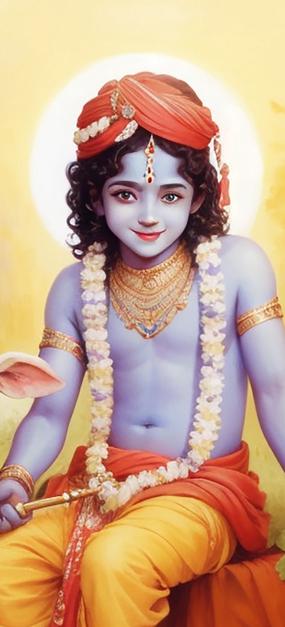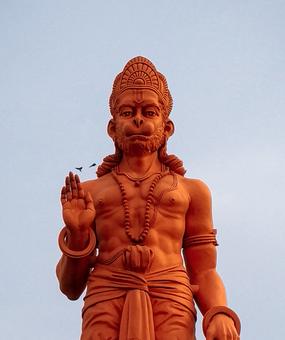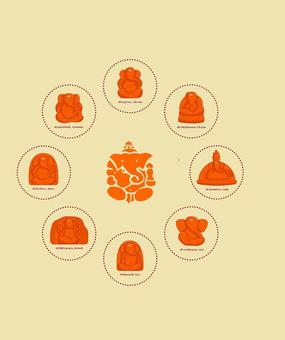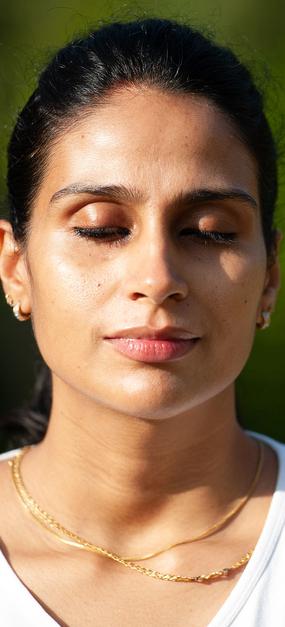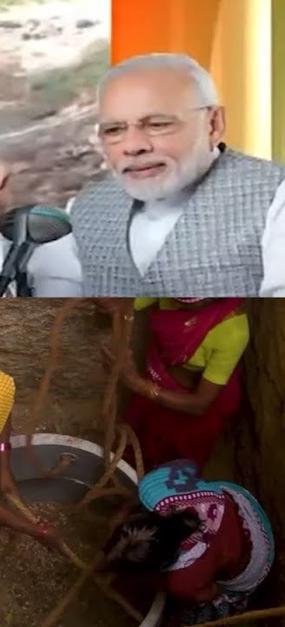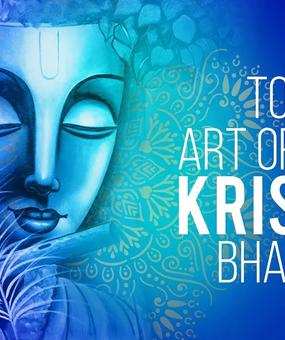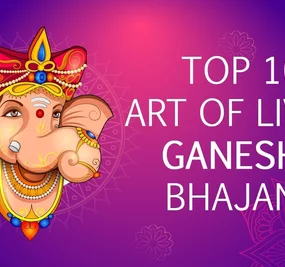Lord Krishna’s life is peppered with innumerable incidences – each one leading to another. These incidences are part of a continuum. It would be difficult to isolate them or choose just a few.
Yet to celebrate the qualities of a much-adored deity, there are definitive moments in his life that stand out. These moments have been interpreted, revered, debated, and immortalized through different expressions. Here’s a quick look at a few of them through the lens of Bharath Gyan. A passionate research initiative, Bharath Gyan is painstakingly dotting the pieces together, foraging amongst lost remnants to keep the glorious past alive and known.
Showing Yashoda the Cosmos
One day, the infant Krishna ate some mud while crawling in the garden. His ever-watchful mother, Yashoda, observed this and tried to remove the sand granules from his mouth. She saw the entire cosmos – the solar system, galaxies, and, indeed, the universe – inside his mouth.
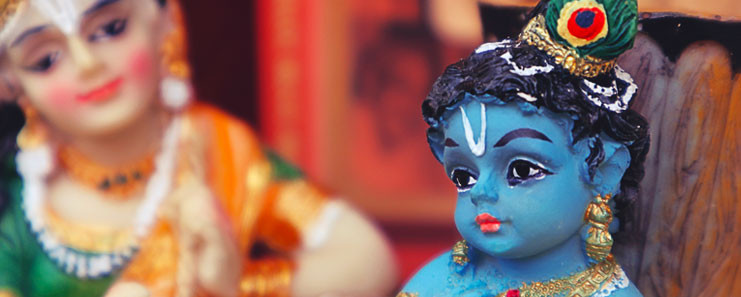
This vision showed her that the child was not an ordinary one.
Vanquishing Kamsa’s Asuras:
Many legends describe Krishna vanquished the terrible assassins who were sent by Kamsa, such as Putana, Arishtasura, and Aghasura. Krishna, single-handedly, even as a child managed to overpower them. Braj Bhumi’s 24 fruit groves and numerous forests bore witness to Krishna’s extraordinary feats. He defeated:
- Dhenukasura, associated with the form of an ass, who stopped the people of Braj from entering the groves
- Bakasura, associated with the form of a Baka (crane)
- Aghasura, associated with the form of a huge snake, who was sent to poison and kill Krishna when he was a baby
- Aristasura, associated with the form of a bull, who dug up the riverside and came charging into Braj
- Kaliya, the fierce, venomous snake, which was poisoning the waters of the Yamuna.
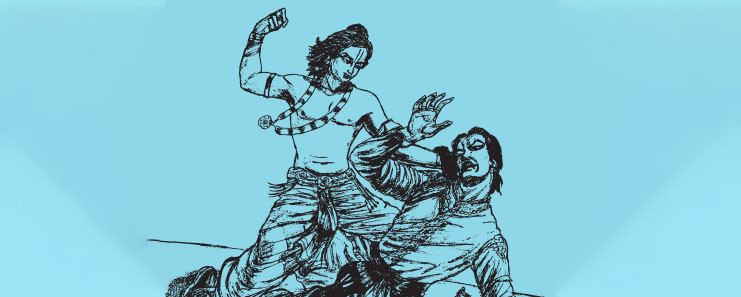
Lifting of the Govardhan
The people of Braj were absorbed in preparing for the annual worship of Lord Indra. Little Krishna watched these preparations and requested the people of Braj: Instead of praying to Indra, pray to the fields, lakes, pastures, cows – nature that helped them in their daily life. He convinced them to pray to Govardhan Giri, the hill called Govardhan.
The people of Braj did so, and suddenly as a sign of Indra’s wrath, it began raining heavily. People ran up to Krishna, asking him for a way to stop this. Krishna then went to Govardhan Giri and lifted it on his little finger. Everybody – along with their animals – rushed under the hill for shelter.
It rained and poured for seven days. Finally, after Indra’s wrath wore out, thunder and rains stopped and calm returned to Braj.
The secret of an Idol in Udupi
To satisfy his mother Devaki’s desire to relive his childhood, Krishna had an idol sculpted out of Saligrama stone by Vishwakarma, the architect. This idol was later given to Rukmini. After Krishna’s time, the idol got buried in a part of an erstwhile portion of Dwarka. The soil of Dwarka which encapsulated the form/ idol (Vigraha) is called Gopichandan (Gopi refers to light brown while chandan is a sandalwood-like paste).
A sailor found this heavy piece of sand and used it as ballast for his boat. While sailing near Udupi, he was caught in a storm and rescued by saint Madhvacharya. On seeing the idol, the saint requested for it and installed it in Udupi.
Freeing his Parents
It is said that on his vile uncle’s invitation Krishna left Vrindavan for Mathura with his brother. 12-year-old Krishna had already gained a formidable reputation for his valor and fearlessness. The duo was challenged by uncle Kamsa’s wrestlers, Mushtika and his wrestling partner Chanura to Mallayuddha, a wrestling bout. After defeating the two wrestlers in this traditional sport, Krishna challenged Kamsa, killing him too.
The young Krishna then freed his parents, Devaki and Vasudeva from captivity. He also freed his maternal grandfather Ugrasena, from whom Kamsa had usurped the kingdom. Thereafter, Krishna reinstated King Ugrasena on the throne.
Kamsa’s death angered his father-in-law, Jarasandha. To avenge the death, Jarasandha attacked Mathura 17 times over the next few years. Each time, Krishna and Balaram protected Mathura.
Obtaining the conch at Sandipani’s Ashram
Krishna and Balarama went to Sage Sandipani’s ashram for their schooling in Ujjain, known then as Avantika. Krishna made many friends there, famous amongst them was Sudama.
One of the ashram stories recounts how Krishna acquired his famous conch Panchajanya while completing a task he had undertaken for his Guru Sandipani. This was his Guru Dakshina. Years later, Krishna’s Panchajanya conch was used to signal the start of the Kurukshetra war.
A legendary friendship
Sudama and Krishna’s friendship has become legendary. When a poverty-stricken Sudama went to meet his friend, he could only offer some poha (rice flakes). Sudama was overcome with embarrassment at offering such a meager gift amongst his friend’s palatial surroundings. Krishna lovingly ate the poha, rejoicing at meeting his friend.
When Sudama went home, he found his hut had transformed into a palace. A gift from his friend.
Narakasura & 16,000 wives
It had been prophesied that Narakasura would die at the hands of a woman. To escape this fate, he imprisoned all the maidens from his kingdom, causing widespread distress.
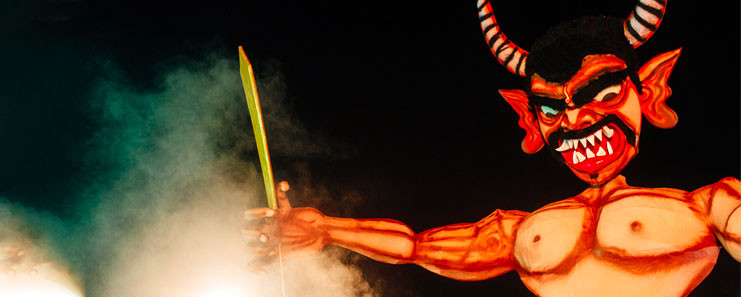
To end this tyranny, Krishna, accompanied by his valiant wife Sathyabhama, went to battle with Narakasura. Sathyabhama engaged Narakasura in a duel and killed him. Krishna then released all the maidens from captivity. To save themselves from dishonor, the women requested Krishna to marry them.
A special chariot ride
After the failed peace mission, Krishna prepares to leave Hastinapura. Karna accompanies him in his chariot to the outskirts of the city. Krishna tells Karna about how he is the firstborn son of Kunti and how the Pandavas were his brothers.
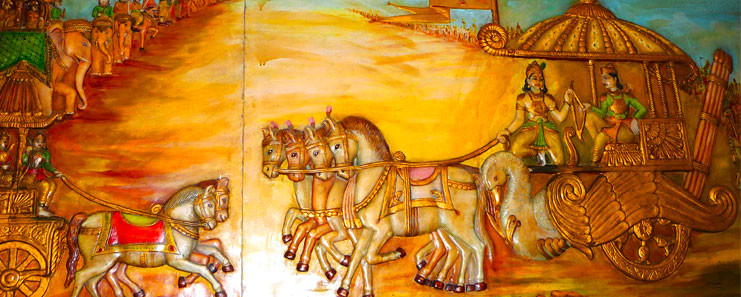
He tries to coax Karna into parting ways with Duryodhana yet Karna is indebted to Duryodhan and cannot leave. Karna then makes Krishna promise that he would not reveal his true identity to the Pandavas.
Peace messenger, Pandava Dhuta
Krishna took on the role of a peace ambassador on behalf of the Pandavas to the Hastinapura court. When Krishna went to Duryodhana before the war of Kurukshetra, Duryodhana created a trap door under Krishna’s chair. He wanted to capture the Pandava’s share of the kingdom and avert the war.
Krishna, instead of falling into the trap, showed his cosmic form, Vishwaroopa Darshana to Duryodhana and all those present. Despite seeing the frightening and the enlightening form, Duryodhana was so blinded by his desire for power that he did not see the message in Krishna’s cosmic form. And did not pay heed to any peacekeeping measures, thus paving the way for the war.
The truth
After this event, Vidura, the venerable old counselor and half brother of King Dhritarashtra, asked Krishna why he had bothered at all, considering that war was inevitable. Krishna tells Vidura, “I am thinking not of my place and my time, but of the future. Future generations will think that I allowed a great calamity to befall the world without my lifting a finger to prevent it. Fear of failure is not an excuse for lack of effort…”
Revealing his true self
A perplexed Arjuna is unable to lift his arms to wage war against his cousins and relatives. There, in the middle of the battlefield, Krishna gives Arjuna the wisdom of the Bhagavad Gita. During this Upadesha, Krishna revealed his true self, Vishvaroopa Darshan to Arjuna.
This Upadesha, counsel, and the darshan have since deified Krishna in the minds and hearts of the people of the land.
Gandhari’s curse
After the war, Gandhari is overwhelmed by grief at the death of all her 100 sons, the Kauravas. She cursed Krishna that like her, he, too, would see the end of his dynasty 36 years later, in his lifetime.
Indeed, 36 years later, the Yadava Civil War broke out in Dwarka after Krishna departed from there and Dwaraka went undersea.
Before the impending catastrophe, Krishna called his people and advised them to move to other lands, saying Dwaraka was in danger. He then moved south to Prabhas Patan, near present-day Somnath. It was there that a hunter called Jara, mistook Krisha’s heel to be the mouth of a deer and shot a poisoned arrow.
Thus, Krishna departed for his heavenly abode on the banks of the confluence of the rivers Hiranya, Kapila, and Sarasvati.
Arjuna, on hearing of the departure of Krishna from this world and the ensuing bitter war, rushed from Hastinapura. He rescued Krishna’s wives and other women of Dwaraka and headed back towards Hastinapura. Soon as he left the city of Dwaraka, he saw the coastal city of Dwaraka being engulfed by a major tidal wave, like a tsunami. Arjuna gives an eyewitness report in the Mausala Parva of what he saw from a distance:
“Sea had been beating against the shore constantly,
Broke the boundary and rushed into the city.
Saw the beautiful buildings submerged one by one.
The sea covered up the entire city
In a matter of a few minutes, it was all over.
Sea had now become a placid lake.
There was no trace of the beautiful city.
Dwarka was just a name,
Just a memory.”
(Mausala Parva is one of the concluding chapters in the Mahabharata text.)
The connection to Jagannath Puri temple
Legends talk of people who came east from Dwaraka, carrying with them, the mortal remains of Krishna (pinda), which have been kept in a hollow cavity in the idol of the Jagannath Puri Temple. According to the Sthala Purana, local legend of the temple, every 12 years this bundle Brahmapotli is removed and transferred to a fresh idol.
The bundle with the remains is normally physically handled by the most aged priest of the temple, who is blindfolded.
The material has been sourced from @bharathgyan. This research team, led by a passionate husband-wife duo – Dr. DK Hari and Dr. Hema Hari, unearth some of India’s untold stories and make them contemporary. You can click here to buy any of their books on Indian civilization.
Isn’t our cultural heritage fascinating? Equally intriguing is our tradition of healing and health. Thousands of years ago, our ancient sages unlocked techniques and wisdom to maintain holistic health. Know more about these secrets at The Art of Living Meditation and Breath Program.




